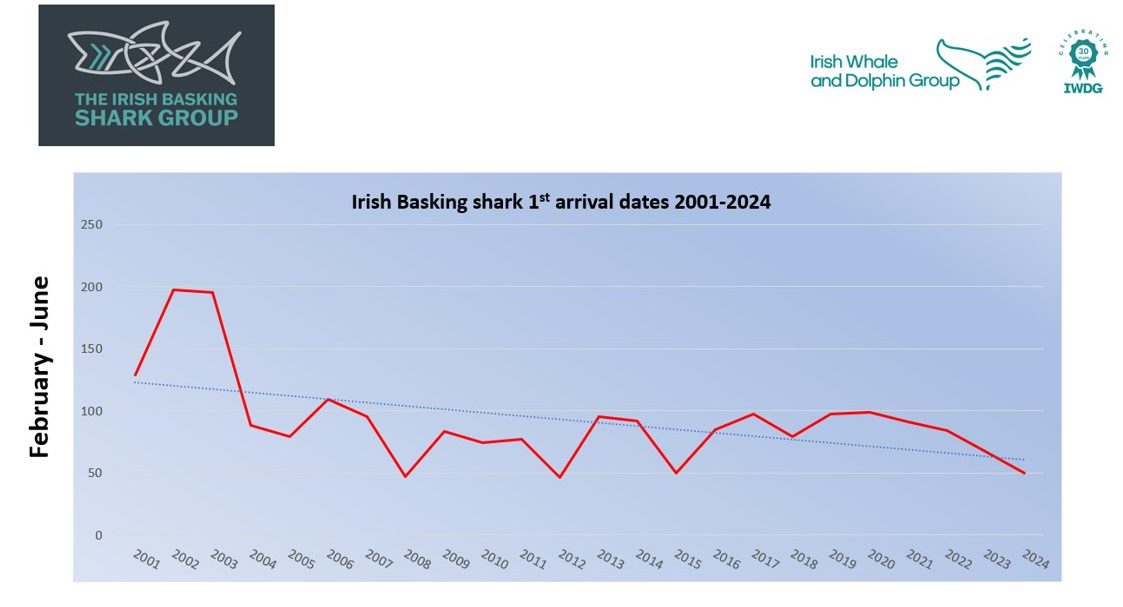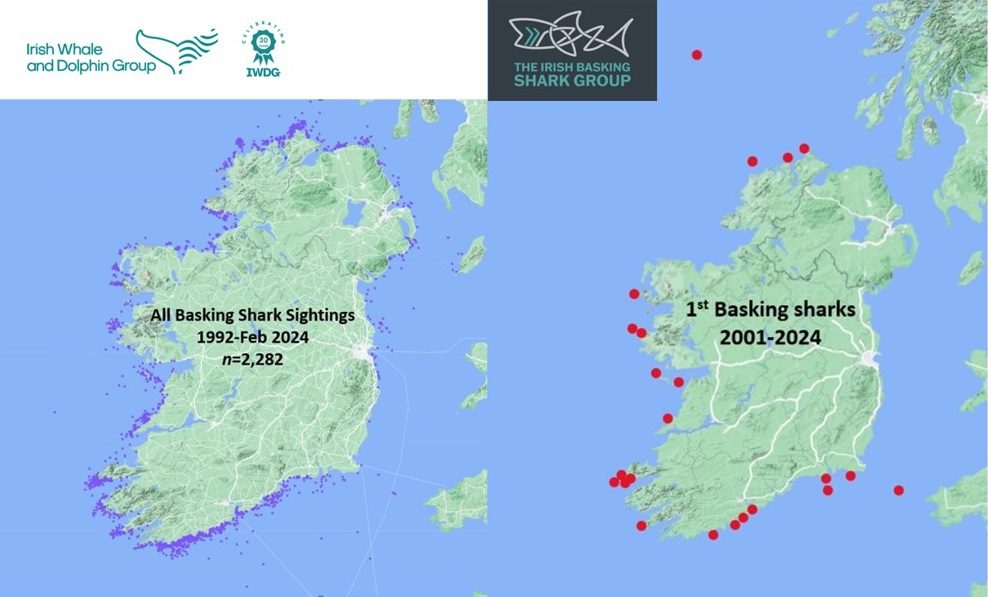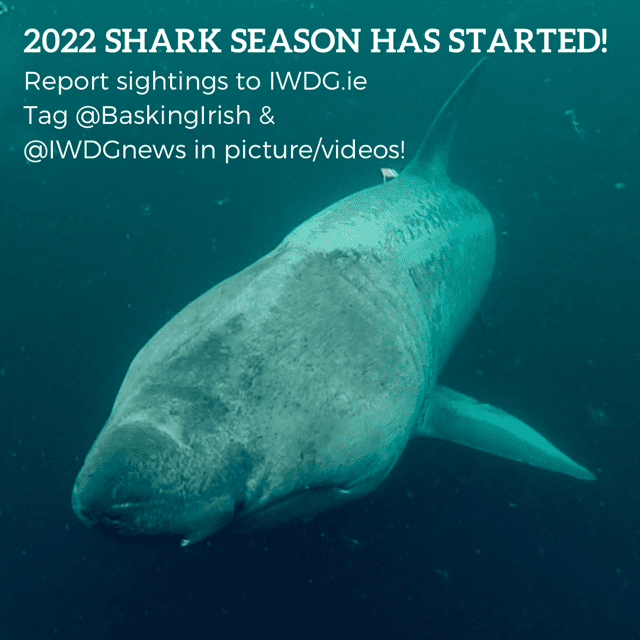Some of you could be forgiven for forgetting what a basking shark looks like, that is assuming your name isn’t Pat Concannon, who runs the ferry service out of Cleggan to Inisboffin. Pat had the good fortune to see one this Mon. 19th February. But this wasn’t just another basking shark sighting record, it’s way more important, as it is our first of 2024.
It’s by now some time since any of us have seen a basker, which reflects on little other than their seasonality, as Cetorhinus maximus typically arrives in spring, with a peak around May/June and by July we’re generally mopping up the last few sightings of the year. So, the vast majority of sighting records are received over a fairly short three-month shark season running April to June. While there are always outliers, such as the late season specimen videoed off Balbriggan, North Co. Dublin on Dec. 1st 2023, these are by their nature the exception to the rule.
Pat’s sighting is very much in keeping with our observations on other species of marine megafauna, such as the humpback whale, where the facts all point to their arriving in Irish coastal waters earlier each year and basking sharks it seems are no different. So, while Feb. 19th is not the earliest date we’ve ever documented a basking shark, it is within four days of this milestone. In fact, going back over the 24 years since IWDG started systematically recording basking sharks, this ranks as our 3rd earliest sighting, tallying nicely with Pat’s comment to Simon Berrow that this was the earliest he’s seen a basking shark in 30 years. This trend is illustrated on the graph below.

Having looked briefly at the “WHEN”, begs the “WHERE” question. Is there any significance in where these early season sharks are first appearing? To do this, it may help us plot all sightings of this species going right back to the early days of IWDG (Map left) and then compare how they plot with a map of our earliest arrivers over the past 23 years (Map right). It’s a crude way of presenting this, but on balance those first arrivers are plotting in a way that reflects the overall map, with the east coast standing out as the one stretch of our coastline where basking shark sightings could be considered “rare”. But it is noteworthy that in 13 of these 23 years (56%) the first arrivers were recorded along the Southwest and Celtic Sea area, which supports our observations that most sharks start arriving in numbers initially along the south/southwest and then move clockwise around the country with a high % of our late season sharks showing off the north and east coast.

During 2023 we received and validated 156 sightings of the planet’s second largest shark; while not a great year, it was another good one. It will be interesting to see if these earlier arrival times, mean they are also leaving earlier or whether their residency periods are in fact extending. Either way, it’s wonderful to see this “honorary whale” in our waters, and IWDG has always handled their sightings in the same way we do those of cetaceans. Our sightings scheme in fact collects sightings data on behalf of the Irish Basking Shark Study Group, as we share the same reporting portal. This is a really good example of research groups and NGO’s coming together in a genuine spirit of collaboration to advance the conservation of an important and iconic marine species.

By Pádraig Whooley, IWDG Sightings Officer
If you’d like to learn more about basking sharks and cetaceans in Irish waters and how to observe, identify and record them, you might be interested in the IWDG’s Residential Weekend Whale (& basking shark) Watching weekend course at CECAS in Leap, West Cork, May 24-26th. See link below:
Bookings link for May 24-26th Course:

